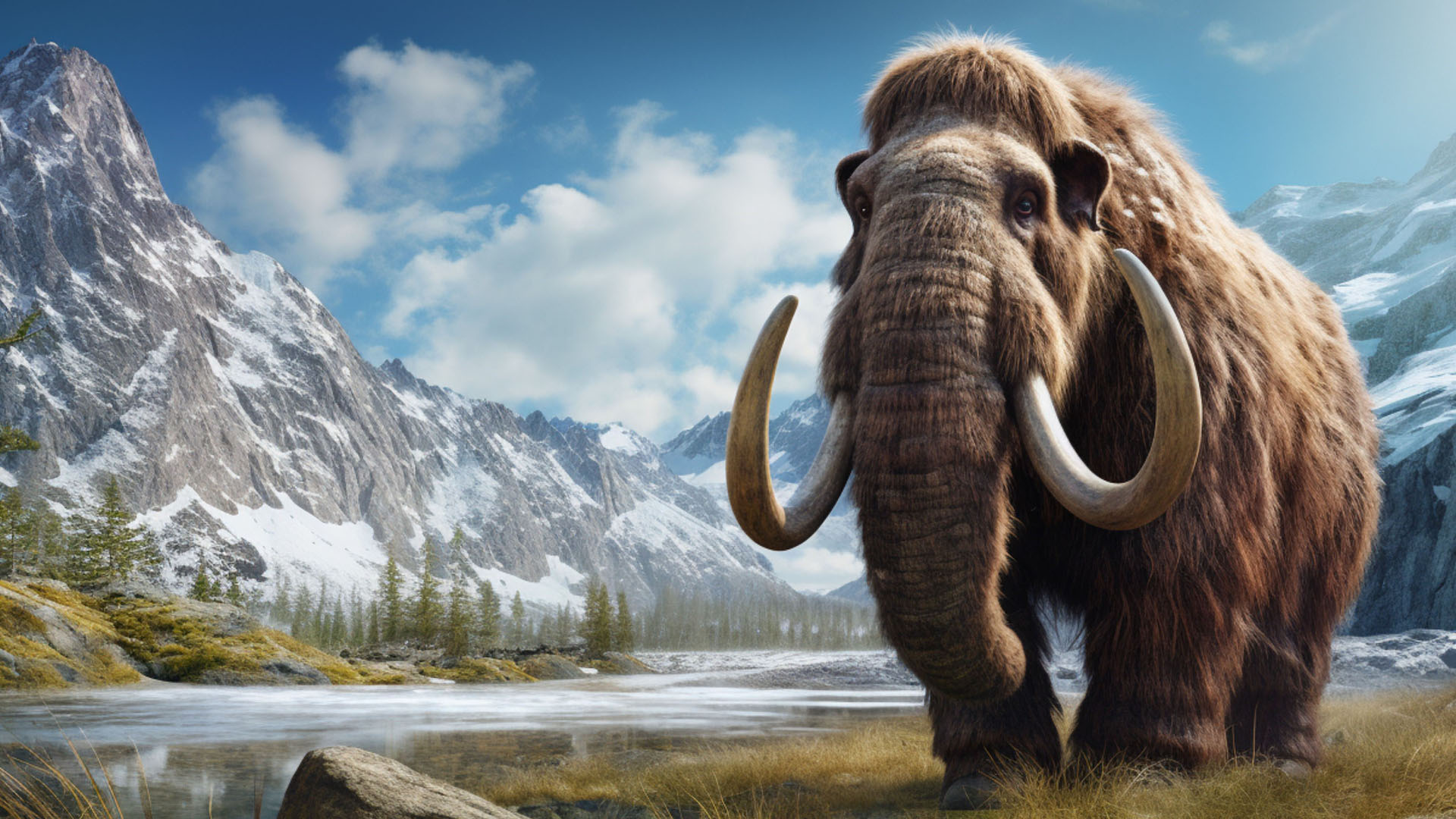A species is classified as extinct when all of its members no longer exist on Earth. It has been estimated that 100 to 10,000 species – from microorganisms to larger plants and animals – go extinct each year due to various human activities and environmental conditions (“Why endangered?”). One of the most well-known extinct animals is the woolly mammoth (Mammuthus primigenius), a prehistoric mammal known for its wool-like coat, large, curved tusks, and impressive height of up to 4 metres. The last woolly mammoth died on a remote island in the Arctic Ocean approximately 4,000 years ago from extreme weather and isolation, although the population had already been significantly reduced during the Ice Age (University of Helsinki). However, modern scientists have begun a project that aims to resurrect these prehistoric animals back to life by utilising recent advances in genetic technology.
Why? That is the first and most fundamental question that may arise in response to this information. Why do we, or should we, want to bring back an animal that has been gone for thousands of years? According to the wildlife conservation organisation Revive & Restore, the woolly mammoth was chosen as the best candidate for this project because of its close genetic ties to the Asian elephant, a species of mammoth that is still alive today. This connection would make the de-extinction process easier, as scientists would be able to edit the genes for woolly mammoth traits into the Asian elephant genome through CRISPR gene-editing technology and hypothetically produce functional offspring that possess these characteristics. The most important out of the said traits is resistance to the cold, because this will play a crucial role in addressing the biggest environmental issue facing Earth: climate change.
By producing elephants that have the woolly mammoth’s resistance to colder climates, scientists hope to revive the Mammoth Steppe, the vastest biome in history. What once was a vibrant ecosystem that stretched from Canada to Spain and China to the Arctic Islands, survived through glacial cycles in the Ice Age, and was abundant with mammoths, bison, horses, and other grazing herds was eventually destroyed from the arrival of humans and climate change (“Scientific Background”). The absence of these large grazing species has caused thick, insulating layers of snow to pile up on the soil of the remaining tundra ecosystem; because the excessive amount of snow actually prevents the winter cold from reaching the soil, the melting of the permafrost increases, which could release greenhouse gases that have been trapped within for millenia (“Why bring back the woolly mammoth?”). The quantity of carbon emitted from the world’s permafrost being melted would be comparable to that from all the forests on Earth being burned 2.5 times.
Such a disastrous outcome could be prevented by cold-resistant mammoths inhabiting and grazing these areas again and converting the tundra back to grasslands. The presence of these large animals and their grazing and compaction would help the permafrost freeze more deeply in the winter, and the grass would act as an insulator for the permafrost and prevent it from melting during the summer. In addition to these climate-related benefits, studying the genome of the woolly mammoth may contribute to finding new treatments for human diseases, prevent the extinction of currently endangered elephant species, and even impact the space exploration field by potentially offering ways for astronauts to survive in very cold climates (“Why bring back the woolly mammoth?”).
However, all of these thrilling possibilities are overshadowed by ethical and moral debates. Even if we possess the power and technology to recreate extinct species, should it be allowed? On one hand, de-extinction may offer an opportunity for humans to make amends for being a major factor in the dying out of the original woolly mammoths. But should we be held responsible for the deeds of our ancestors, which we personally had no control over? Let us consider also the fate of the animals being resurrected. It is possible that the process of de-extinction will cause the sentient beings to unnecessarily suffer. For example, there has already been a case where an extinct animal has been brought back to life and suffered from the consequences; the bucardo, also known as the Pyrenean ibex, was declared extinct in 2000 but cloned by scientists in 2003. The clone lived a very short life consisting of extreme pain due to being born with deformed lungs (Odenbaugh). Similarly, resurrecting animals by genetic cloning may cause abnormalities, chronic diseases, and early death, among other frightful consequences. Is the project still worth the risk?
Despite the heated arguments over these issues, Colossal, the organisation leading this project, is moving forward and has stated that results may come out as early as 2027 (Newcomb). The facts are that advanced gene-editing technology exists and woolly mammoth tissue samples are retrievable from remains that have been preserved in the Arctic ice over millennia. This project not only considers the benefits and consequences of woolly mammoths returning, but also brings to light the larger debate of where the limit should be for genetic engineering.
Bibliography
AMNH Editors. “Why Are so Many Animals Endangered?” American Museum of Natural History, American Museum of Natural History, www.amnh.org/explore/ology/earth/ask-a-scientist-about-our-environment/why-are-so-many-animals-endangered#:~:text=The%20current%20extinction%20is%20most,faster%20than%20historic%20extinction%20rates. Accessed 16 Mar. 2024.
“Mammoth.” Colossal, Colossal Inc., 11 June 2023, colossal.com/mammoth/.
Newcomb, Tim. “Scientists Are Reincarnating the Woolly Mammoth to Return in 4 Years.” Popular Mechanics, Hearst Magazine Media, Inc., 30 Jan. 2023, www.popularmechanics.com/science/animals/a42708517/scientists-reincarnating-woolly-mammoth/.
Odenbaugh, Jay. “Philosophy and Ethics of De-Extinction.” Cambridge Core, Cambridge University Press, 30 Jan. 2023,
www.cambridge.org/core/journals/cambridge-prisms-extinction/article/philosophy-and-ethics-of-deextinction/8486EF7E9B0E7A4AB5A16CC40DC00049.
QuangTrungArt. Mammoth: Prehistoric elephant known for its long, curved tusks. 17 July 2023. Shutterstock, Shutterstock, https://www.shutterstock.com/image-illustration/mammoth-prehistoric-elephant-known-long-curved-2333307357. Accessed 17 Mar. 2024.
“Scientific Background.” Scientific Background | Pleistocene Park, Pleistocene Park, pleistocenepark.ru/science/. Accessed 16 Mar. 2024.
University of Helsinki. “The Last Mammoths Died on a Remote Island.” ScienceDaily, ScienceDaily, 7 Oct. 2019, www.sciencedaily.com/releases/2019/10/191007081750.htm#:~:text=Isolation%2C%20extreme%20weather%2C%20and%20the,herbivores%20just%204%2C000%20years%20ago.&text=The%20last%20woolly%20mammoths%20lived,within%20a%20very%20short%20time.
“Why Bring Back the Woolly Mammoth?” Revive & Restore, Revive & Restore, reviverestore.org/projects/woolly-mammoth/why-bring-it-back/. Accessed 16 Mar. 2024.


